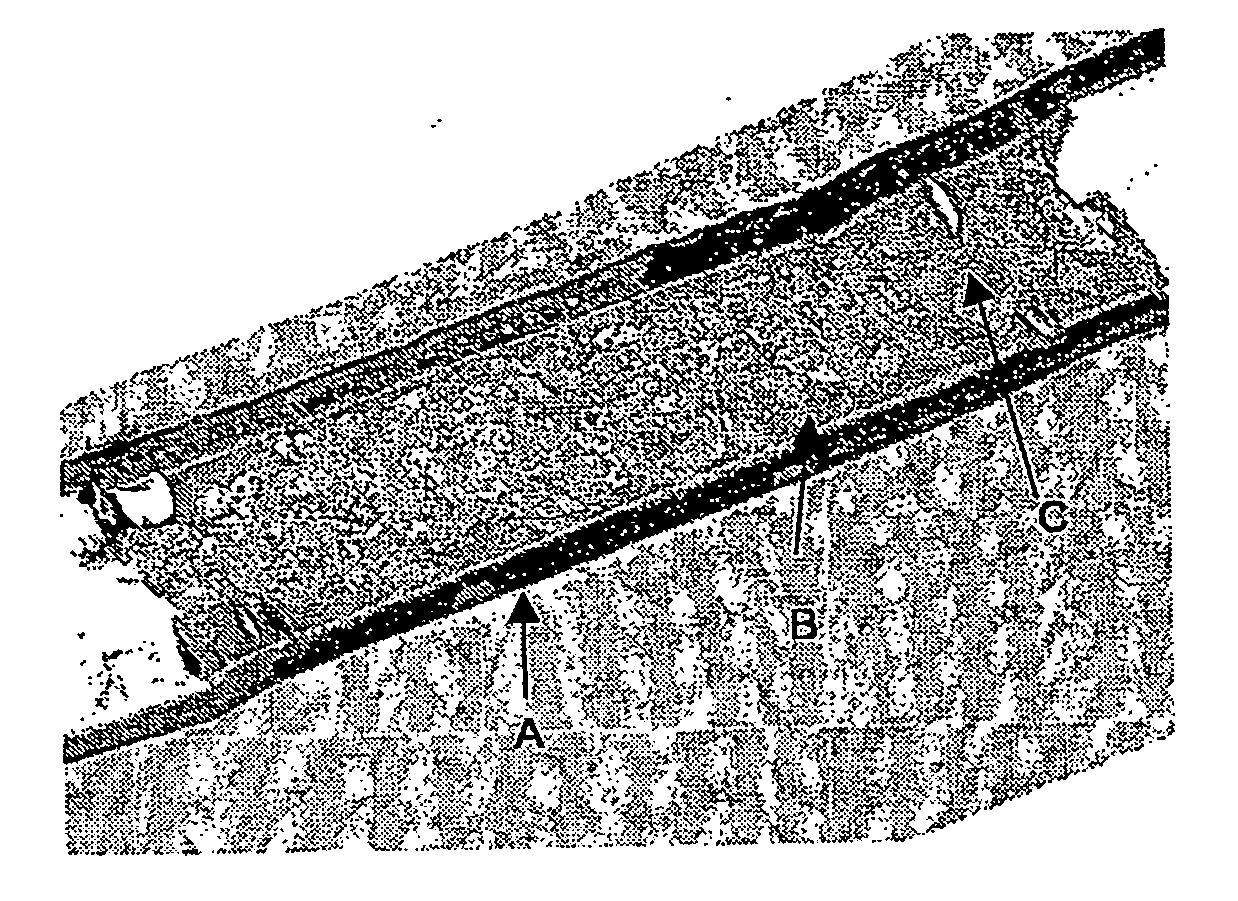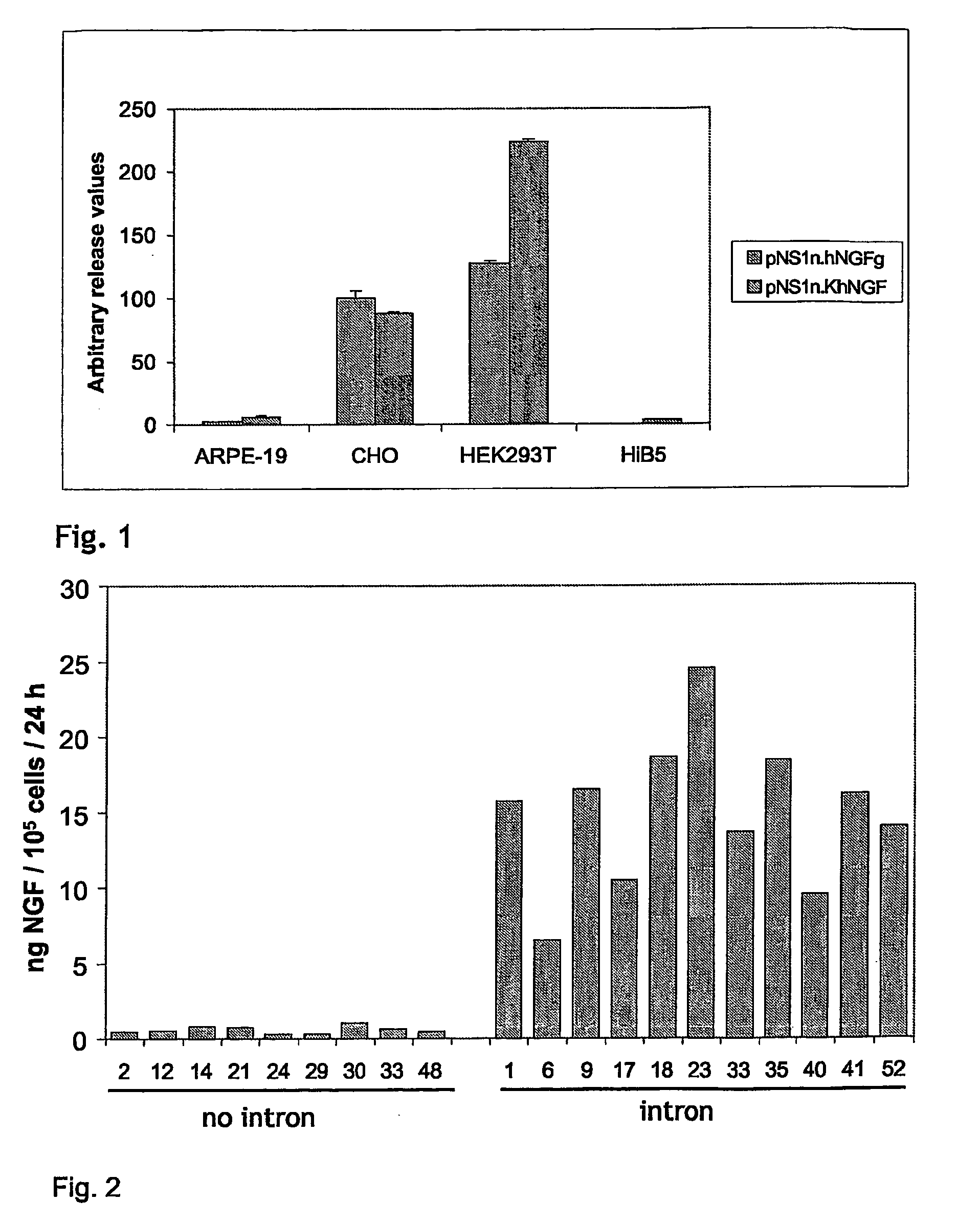Human Therapeutic Cells Secreting Nerve Growth Factor
a technology of nerve growth factor and human therapeutic cells, which is applied in the field of human cell lines, can solve the problems of cho cells and hek293t cells not being suited for human therapy, and achieve the effect of safe cellular or capular delivery and higher safety
- Summary
- Abstract
- Description
- Claims
- Application Information
AI Technical Summary
Benefits of technology
Problems solved by technology
Method used
Image
Examples
example 2
Expression of NGF Using Intron Containing Transcripts
Addition of Chimeric Intron
[0252]BstZ171 / NheI fragments were released from pNS1n.hNGF and pNS1n.KhNGF. pCI-neo (Promega Inc) was digested with BamHI, blunted and digested with NheI. The NGF-containing fragments from pNS1n.hNGF and pNS1n.KhNGF were cloned in the backbone fragment of pCI-neo to yield pCIn.hNGF and pCIn.KhNGF, respectively. A part of the nucleotide sequence of the pCIn.hNGF is set forth in FIG. 10 starting with the first base of the CMV promoter. For comparison, a similar part of the pCIn.KhNGF is shown in FIG. 11. The Kozak consensus sequence (underlined) is located in bases no 1128 to 1133 (FIG. 11).
pNN
[0253]Human NGF was PCR cloned from human genomic DNA using the following primers: 5′ primer: 5′-TATAGGATCCCTCTGAGGGACCCAGAAACT-3′ (SEQ ID No 24), 3′ primer. 5′-TATACTCGAGCAGGTCAGGCTCTTCTCAC3′ (SEQ ID No 25). The 839 bp PCR fragment was cut with BamHI and XhoI and inserted between BamHI and XhoI sites of pNS1n. pNS1n...
example 3
Comparison of Stable Transfected Clones
[0263]Clones transfected with pCIn.hNGF, pCIn.KhNGF and pNS1n-rINSintroA-hNGF (pNRN) were selected as described above. These three expression vectors gave the highest NGF release levels in transient and stable transfection. The NGF release was measured as described in Example 1. The results are shown in FIG. 8. All the selected clones secreted in excess of 5 ng NGF / 105 cells / 24 hours.
[0264]Clones #33 (NGC-0233) and #95 (NGC-0295) have been deposited under the Budapest Treaty with DSMZ, Mascheroder Weg 1b, D-38124 Braunschweig, Germany, under accession numbers DSM ACC2706 and DSM ACC2707 respectively.
example 4
Evaluation of Processing of NGF from Transfected Clones
[0265]The purpose of this experiment was to analyse NGF secreted from transfected ARPE-19 clones in Western blot analysis to confirm correct processing of the secreted NGF.
PUM
| Property | Measurement | Unit |
|---|---|---|
| volume | aaaaa | aaaaa |
| length | aaaaa | aaaaa |
| depth | aaaaa | aaaaa |
Abstract
Description
Claims
Application Information
 Login to View More
Login to View More - R&D
- Intellectual Property
- Life Sciences
- Materials
- Tech Scout
- Unparalleled Data Quality
- Higher Quality Content
- 60% Fewer Hallucinations
Browse by: Latest US Patents, China's latest patents, Technical Efficacy Thesaurus, Application Domain, Technology Topic, Popular Technical Reports.
© 2025 PatSnap. All rights reserved.Legal|Privacy policy|Modern Slavery Act Transparency Statement|Sitemap|About US| Contact US: help@patsnap.com



